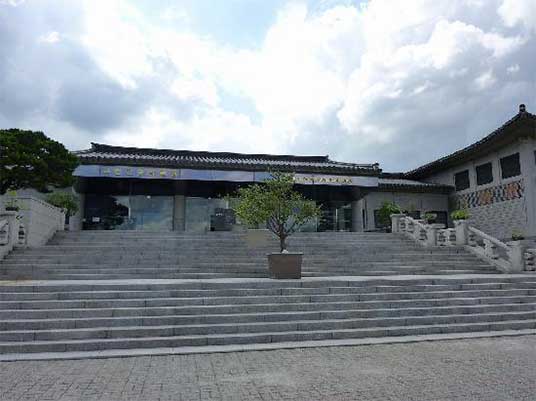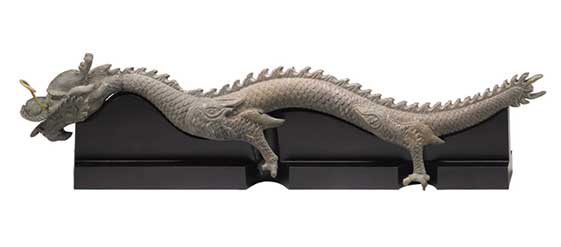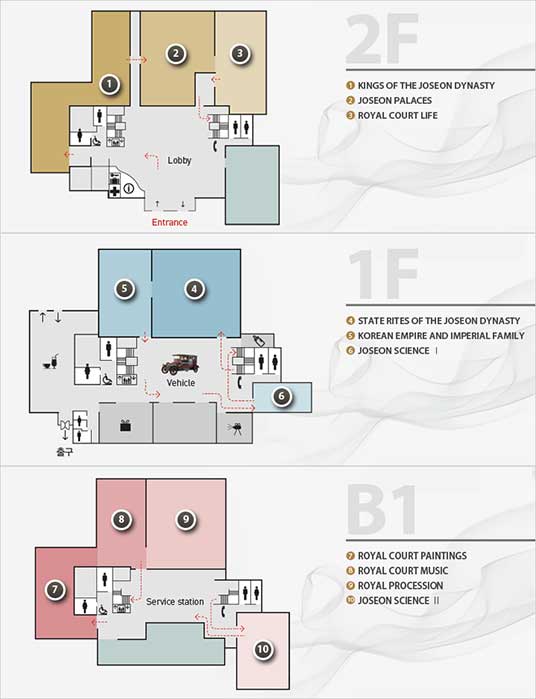
National Palace Museum of Korea
National Palace Museum of Korea is a national museum of South Korea located in Gyeongbokgung Palace, Seoul. The museum first began as the "Korean Imperial Museum", which was established on September, 1908 and was originally located in Changgyeonggung Palace. On November of the following year, the museum was opened to the public. However, on April, 1938, the ruling Japanese government renamed the museum to the "Museum of Yi dynasty". In March, 1946, after the liberation of Korea, it was renamed "Deoksugung Museum". In 1991, Cultural Heritage Administration instituted the museum in Seokjojeon (석조전, Stone Hall) of Deoksugung Palace, and in 2005, the museum was relocated to a modern building inside Gyeongbokgung Palace.
1. Royal Symbols and Records -
The Joseon Dynasty attained Confucian ideals, and therefore, the king and his queen were worshipped as parents of all citizens. To elevate their authority, the Joseon royal households crafted various royal symbols.
2. Ancestral Rites -
The royal ancestral rite was held at a royal shrine encompassing the ancestral tablets of the late kings and queens of the Joseon Dynasty. This was not merely a royal ancestral worshipping ceremony, but also a festival with music and dance, in the hope for the nation's eternal prosperity.
3. Palace Architecture -
The palace was the living quarters of the king and his family as well as the center of administration where the king ruled the nation. The center of the palace in the Joseon Dynasty, according to traditional Oriental architectural planning, was featured at Jeongjeon. The main hall was the center of state events and political discussions, and the Pyeonjeon, the government office.
4. Joseon Sciences - The Joseon Dynasty strove to establish the legitimacy of its foundation to enrich the nation's economy. To attain these ideals, the dynasty unprecedentedly promoted such areas as the sciences and medicine while developing various weapons for national defence.
5. Royal Life - The king and queen were symbolic figures of the Joseon Dynasty, but they were also ordinary people who lived private lives within the palace. The palace was divided into various sections of living space such as the king's office, the queen's quarters, and the prince's study room. Each section contained appropriate pieces of furniture, which were made of the finest quality materials according to well-established criteria for the royal family.
Collection
National Palace Museum of Korea houses over 40,000 artifacts and royal treasures, from the palaces of the Joseon Dynasty and the Korean Empire, of which 14 are National Treasures of South Korea.It displays records, state rites, architecture, clothing, royal life, education, culture, paintings and music of the dynasty’s ruling era. It also has among its collection the royal seal of King Gojong of Joseon, which was used for his personal letters to Russian czar and Italian emperor after 1903. It disappeared during Japanese rule and was re-covered from a US-based Korean collector in 2009.
Lay Out
First Floor
State rites of the Joseon Dynasty, Korean Empire and Imperial Family, and Joseon Sceince.
Second Floor
Kings of The Joseon Dynasty, Joseon Palaces, and Royal Court Life.
B1
Royal court paintings, Royal court music, Royal Procession, and Joseon Sciencs 2
Information
1.Address: Hyojaro 12, Jongno-gu, Seoul 110-820
2.Transportation
Subway: 2 minute walk from Exit 5 of Gyeongbokgung St.(Line3)
10minute walk from Exit 1 of Gwanghwamun St.(Line5)
Bus: Buses that stop near the museum
-171,272,606,700,706,707,708,1020,1711,7018,7022,7025,7212,9073 stop on Jeokseondong
-109,171,272,606,708,1020,1711,6011,7016,7018,7022,7025,7212 stop on Gyeongbokgung



